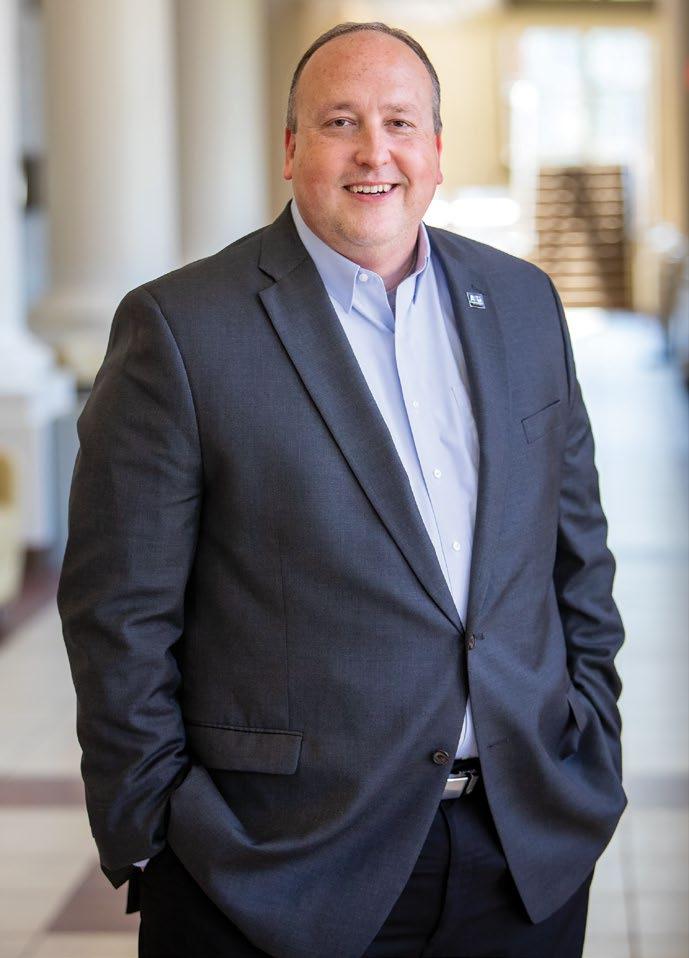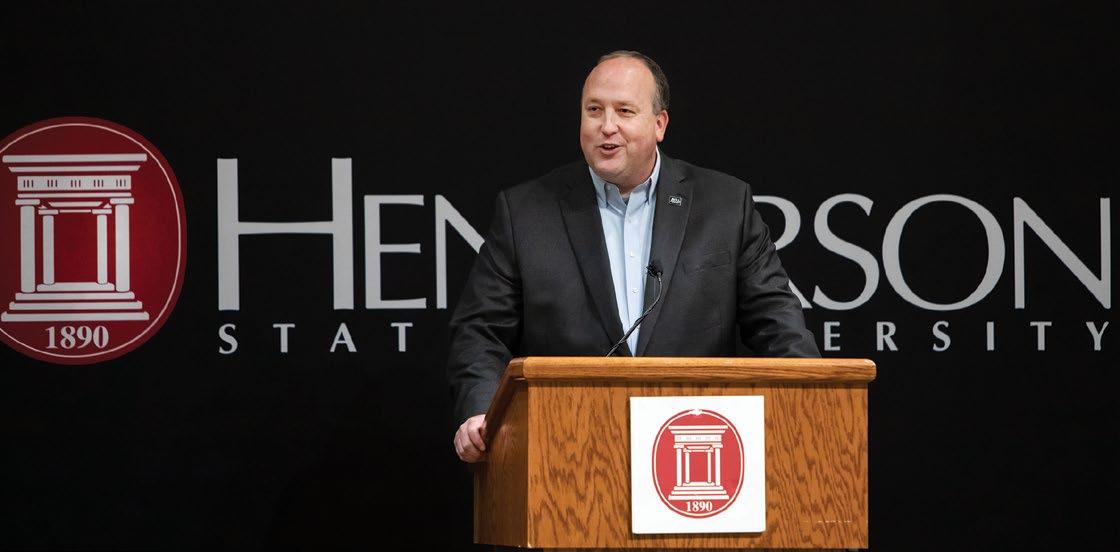
4 minute read
Q&A WITH DR CHUCK WELCH
Q&A WITH DR. CHUCK WELCH, PRESIDENT OF THE ARKANSAS STATE UNIVERSITY SYSTEM
Henderson State officially became a member institution of the Arkansas State University System on February 1. For Reddies who may not be as familiar with the ASU System, can you please give a brief introduction? The Arkansas State University System is based in Little Rock across the street from the State Capitol in the historic Winthrop Rockefeller Building and serves almost 38,000 students annually on campuses in Arkansas and Queretaro, Mexico, and globally online. As the second-largest system, we serve as a significant collective voice on state higher education issues.
Henderson is the system’s seventh member institution and just the second four-year university. Additional members include Arkansas State University, a four-year Carnegie R2 research institution in Jonesboro with degree centers at ASU-Beebe, ASUMountain Home and ASU Mid-South in West Memphis. The $100-million, privately funded Arkansas State University Campus Queretaro opened in September 2017. The system’s two-year college institutions include ASU-Beebe, with additional campuses in Heber Springs and Searcy and an instructional site at Little Rock Air Force Base; ASU-Newport, with additional campuses in Jonesboro and Marked Tree; ASU-Mountain Home; ASU Mid-South in West Memphis; and ASU Three Rivers (formerly College of the Ouachitas) in Malvern.
The Henderson campus is already seeing the benefits of being part of the ASU System, including a new enterprise system implementation. What other opportunities do you see for collaboration across campuses? Our Accelerate ASU initiative with Huron Consulting in 2017 enabled us to perform a comprehensive operational and programmatic review of the System. It identified many opportunities to increase revenues and become more efficient operationally.
Early implementation efforts have been very successful. Centralized information technology functions have led to substantially lower group pricing for software and labor savings. Our new strategic research department is providing critical data to help us make informed decisions. We see additional opportunities in areas such as procurement and payroll services.

All of these shared services–in addition to long-standing system areas such as finance, legal, audit, and governmental relations–bring tremendous value and expertise to Henderson.
Henderson is working through a multi-year financial recovery process. Where do you already see progress, and what can Henderson alumni and friends expect to see in the year ahead? We are making progress in building accurate, transparent and sustainable budgets and operational models. We are making progress in implementing financial controls, reporting and protocols that will prevent some of the challenges of the past from reoccurring. We are also making progress in analyzing the finances of the institution in an effort to strategically allocate resources to ensure long-term growth and sustainability.
This is most definitely a multiyear recovery process and difficult decisions remain. However, I am confident we are moving in the right direction and implementing the appropriate structures to place the university back on stable financial footing. Henderson will follow the same four guiding principles expected of all ASU System institutions when making key decisions: Strategic, Analytical, Efficient, Accountable. Can you provide an update on recruitment for the next chancellor of Henderson State University? It was announced on August 23, 2021, that Dr. Jim Borsig would be stepping down for health reasons, and we would be relaunching the chancellor search immediately. We will utilize essentially the same process, materials and advisory committee from the initial search that was suspended because of the pandemic. I am hopeful that we can name a new chancellor during the fall semester.
You currently serve as board chair of the American Association of State Colleges and Universities, an association of more than 400 public colleges, universities and systems. How has this influenced your work, and what trends do you see across higher education? My service as AASCU Board Chair for the past two years has given me a deeper appreciation for the challenges and opportunities facing higher education institutions across the country. I have also come to realize that the institutions within our System are generally in a much stronger position than many of their national peers. Enrollment challenges, financial constraints, mergers and acquisitions, and radical operational model changes are trends we will see nationwide in the next decade. This will be the result of changing markets and student enrollment patterns, as well as a greater focus on accessibility and affordability. I believe institutions will also be forced to take a closer look at programmatic offerings to ensure viability. Institutions that are flexible and willing to consider change will thrive, while others face a very uncertain future.
As a former president of Henderson State University, you have lived on this campus and are extremely familiar with all things Reddie. What is your favorite Henderson tradition and why is this important to you? How do you describe the Reddie Spirit to others? Wow! This is most definitely the toughest question of all. There are so many wonderful traditions that I love. I immediately think of the Battle of the Ravine and the week-long activities and fun. There is nothing like it in America! I also think of the chills I get hearing the Henderson Showband play “B Flat to G.” I guess the most special tradition, and my personal favorite, would have to be “The Pine Tree Speech.” There is just nothing quite like that atmosphere and that story. It is hard to truly describe the Reddie Spirit, but it is definitely a sense of pride and unwavering commitment to the university. It is also a spirit of resilience that has allowed Henderson to recover from multiple tragedies in her 131-year history, and it is exactly that spirit that will lead us back from our recent challenges.




